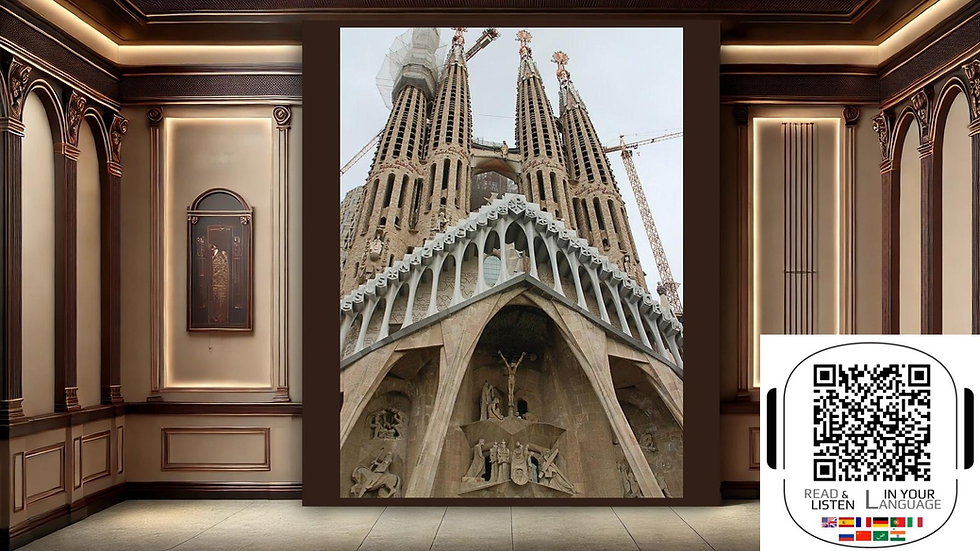The Sagrada Família: Curating the Unfinished Sacred
- carlo1715
- 19 set
- Tempo di lettura: 2 min

It rises like something grown, not built, spires that look like melting sandcastles, stained glass that casts kaleidoscopic ecstasy, columns that branch like trees. And yet, cranes still hover. Stones are still placed. Over a century after its foThe Sagrada Família: Curating the Unfinished Sacred Foundation was laid, it is still becoming. The Sagrada Família is not a completed object. It is an ongoing idea. More than a church, more than a tourist beacon, it is a framework for rethinking permanence, divinity, and the museum’s relationship to time itself.
The Architecture of Becoming
Construction began in 1882, and Gaudí took over the project a year later. He knew he would not live to see it finished. Still, he dedicated his final decades entirely to it. His plans were vast, modular, and evolutionary, a cathedral meant to grow across generations.
What if museums adopted this ethos?
Design buildings that evolve, not ossify.
Treat cultural institutions as gardens, not vaults.
Embrace long-term visions that outlast founders, funders, and trends.
The Sagrada Família isn’t behind schedule. It is on an eternal trajectory.
Nature as Blueprint
Gaudí didn’t borrow from Gothic architecture, he re-breathed it with biology:
Columns inspired by tree trunks.
Vaults shaped like hyperbolic paraboloids.
Windows casting light like forest canopies.
Façades that drip, sprawl, ascend.
His design dissolves the boundary between architecture and ecosystem.
Museums can follow suit:
Let design imitate natural intelligence form driven by function, structure by environment.
Infuse organic patterns into exhibition flow, gallery rhythm, material selection.
Treat the building not as a shell, but as a living organism.
Sacred Geometry, Universal Language
Gaudí integrated mathematical precision with spiritual intention; hyperboloids, helicoids, Fibonacci sequences. Every arch and angle is devotional math. For curators, this opens fresh ground:
Curate mathematics as an aesthetic experience.
Merge science and spirit in design language.
Celebrate complexity as beauty, not obstruction.
The Sagrada Família invites visitors to feel math as awe. What if museums did the same?
Faith as Foundation and Future
This is a sacred space, not a secular one. But unlike most cathedrals, it’s being shaped by the present, incorporating 3D printing, computer modeling, and modern artisanship into a 19th-century vision. Rather than restore the past, it trusts the future to finish the faith.
Museums can ask:
Can we integrate sacred narratives without fossilizing them?
Can we exhibit devotion without distancing?
Can we imagine cultural spaces that are technologically progressive and spiritually rooted?
The basilica doesn’t fear contradiction. It invites it to collaborate.
Curating the Unfinished
What makes the Sagrada Família truly radical is this: its incompleteness is not failure, it is form. Museums obsessed with perfection, deadlines, and full funding may find this uncomfortable. But therein lies the challenge:
What if galleries were designed to embrace what’s incomplete?
Could exhibitions unfold in chapters, not finales?
Might we curate with ongoingness, not closure?
The Sagrada Família turns scaffolding into sacred metaphor.
A Blueprint for Museums That Breathe
Gaudí once said: “My client is not in a hurry.” He meant God. But he might as well have meant Time itself. As museums rush to digitize, modernize, and monetize, the Sagrada Família reminds us to slow down, build for centuries, not quarters and let your building be a story in progress.



Commenti